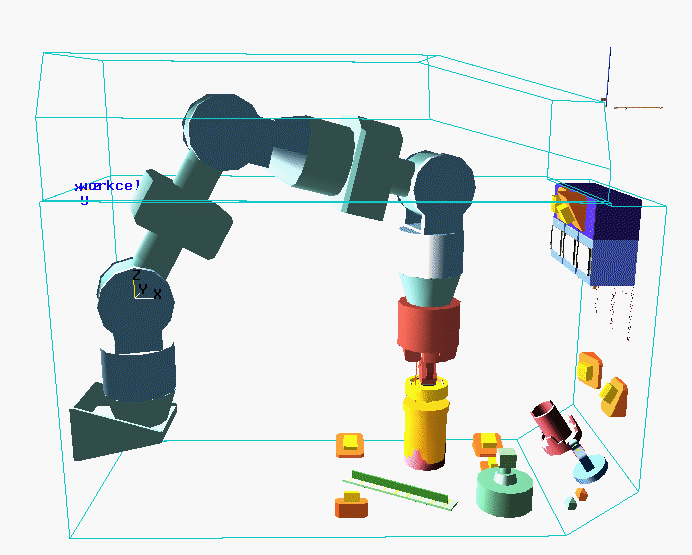|
In April '93 the space robot technology experiment ROTEX
was flown on space-shuttle COLUMBIA (STS 55). A multisensory robot
on board the spacecraft successfully worked in several modes, teleoperated
by astronauts, as well as in different telerobotic ground control
modes.
A variety of operational modes was verified to demonstrate
the flexibility of the overall system:
- teleoperation on board
- teleoperation from ground using predictive graphics
- sensor-based off-line programming
In these operational modes the robot successfully closed and opened connector
plugs (bayonet closure), assembled structures from single parts and captured a
free-floating object.
In the context of ROTEX we have tried to prepare all operational modes
which we can foresee for the coming years not including
the absolutely intelligent robot, which would not need any human supervisor.
Several key technologies made this space robot
technology experiment ROTEX a big success and a unique event:
- multisensory gripper technology
- local (shared autonomy) sensory feedback control concepts
- delay-compensating graphics simulation (incl. sensor simulation)

|